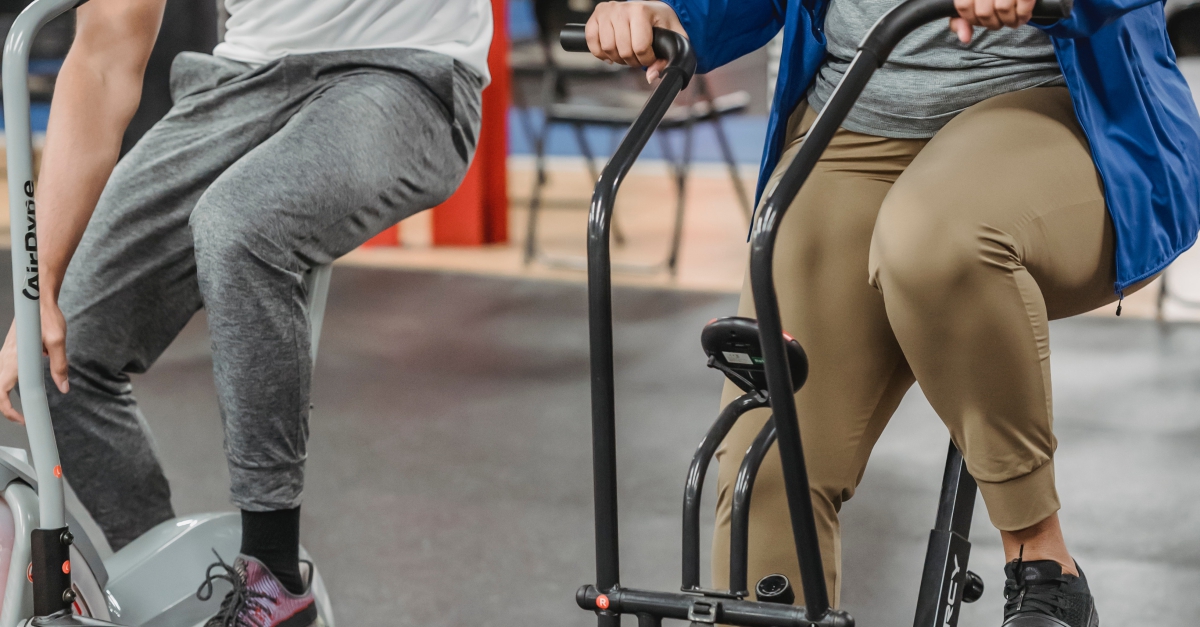To effectively manage hypertension or high blood pressure—also called altapresyon in Tagalog—you need to combine your medication with lifestyle changes. In particular, you need to get some exercise because a sedentary lifestyle has been linked to higher incidences of hypertension.
Most experts agree that it’s best to aim for at least 150 minutes of moderate-intensity physical activity every week, whether or not you have hypertension. After exercising, your blood vessels will be less stiff. This results in better blood flow and thus, lower blood pressure. It can also give you an energy and mood boost.

Brisk walking and cycling are friendlier to knees and ankles compared to running.
The problem, of course, is that most workouts can cause your blood pressure to spike because the increased activity means your muscles need more oxygen. As such, your heart has to work harder for a time. If you overdo things, you may risk developing permanent hypertension that doesn’t subside even when at rest.
This simply means that you have to be a little more careful about how you exercise to stay safe. Here are some tips and things to keep in mind:
Choose Low-Intensity Exercises
If you aren’t used to exercising or if you stopped for a while and are only getting back into the groove, it’s best to start with low-intensity exercises. Then, once your body has gotten used to things, you can start moving on to more vigorous workouts (with advice from your doctor).
Some examples of low-intensity exercises that are ideal for hypertensives include:
Brisk Walking or Stationary Cycling
Try brisk walking around the neighborhood or stationary cycling if you have the equipment. Unlike running, brisk walking and cycling are friendlier to your knees and ankles.
Biking
If you prefer going outside for your workout, biking is a great low-intensity exercise. Start on flat roads and short distances first, before attempting uphill and/or longer rides.
Hiking
For the outdoors enthusiasts, hiking is a great exercise to help lower your blood pressure. Being exposed to nature may also make you feel refreshed.
Swimming
If you’re looking for a workout routine that’s quite friendly to your joints, the best option is swimming. Even those 60 and older can engage in this type of exercise, provided of course that they’re in good enough shape to do so.

Swimming is an exercise that is friendly to our joints compared to other forms of exercises.
Be Aware of Signs of Overexertion
As mentioned, while exercise is great for lowering blood pressure, it can also make hypertension worse when you factor in overexertion. In this case, you’ll be doing more harm than good—and not just to your blood pressure! If you work out too hard and too often, you may end up damaging your muscles and causing other health issues.
Simply put, when you exercise, pay attention to your body. Set a timer so that you know when to wind down and stop. Don’t keep going even if you feel like you can still go for a few more minutes. Remember: your body needs to rest so it can continue to function normally.
It’s also crucial to know the signs of overexertion, such as dizziness, nausea, fatigue, and pain. The latter is particularly important, especially since some people may dismiss pain during exercise as something “normal.” However, pain is your body’s indicator that something’s wrong so pay attention and try to address the cause ASAP.
Mind Your Breathing
When you start doing more high-intensity exercises, one of the things you may not notice you’re doing is holding your breath. This is noticeable in beginner weightlifters, who hold their breath in an attempt to strengthen their spine. However, this prevents the deoxygenated blood from returning to the heart; it can also increase blood pressure. Thus, practice breathing control when you exercise to prevent unintentionally elevating your blood pressure.
A good tip is to also warm up and cool down before and after exercising. This helps your body better acclimate to a change in activity levels, instead of just a quick burst and stop.
Don’t Forget to Hydrate Before Exercise
It’s common knowledge that you lose fluids when you exercise, so most people also know to drink plenty of water afterwards. However, did you know that it’s just as important to hydrate before starting to exercise? This is because water helps lubricate joints, fuel your muscles, and regulate your body temperature. Simply put, you’ll perform better when you drink water before exercise.
Remember to rehydrate during exercise as well. As much as possible try to drink about a cup of water every 10 to 15 minutes, or more if you’re exercising vigorously.
Ask Advice From Your Doctor
Last but certainly not least, make sure to ask your doctor for advice with regard to the type and amount of exercise you should do. This is particularly important if you have other health conditions aside from hypertension. Your doctor will help you assess your fitness level and take into account your medical history when making recommendations to achieve the best results.
Remember: exercise is good for your body—as long as you do it properly and safely. Keep these tips in mind so you can lower your blood pressure and stay healthy.















